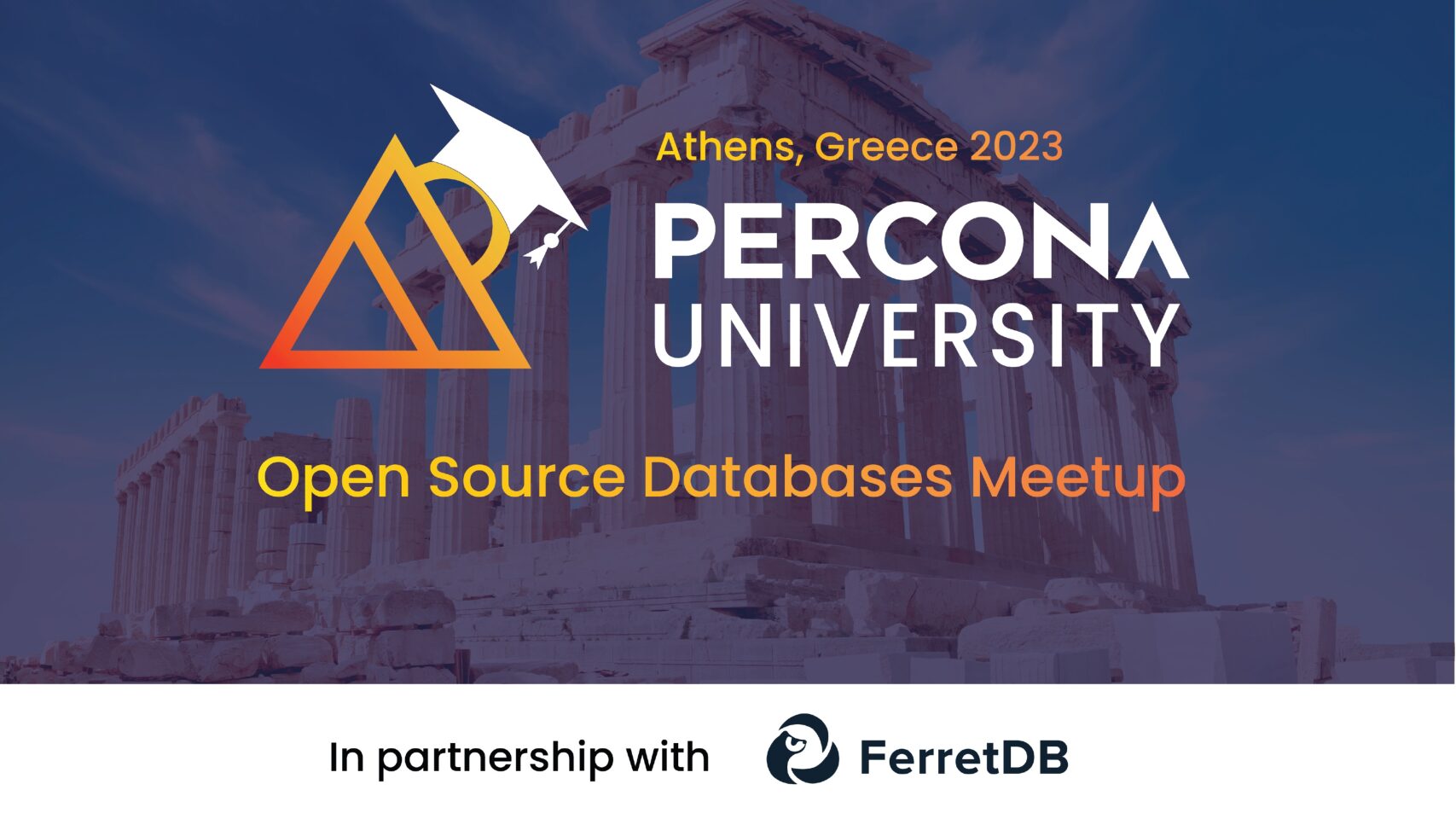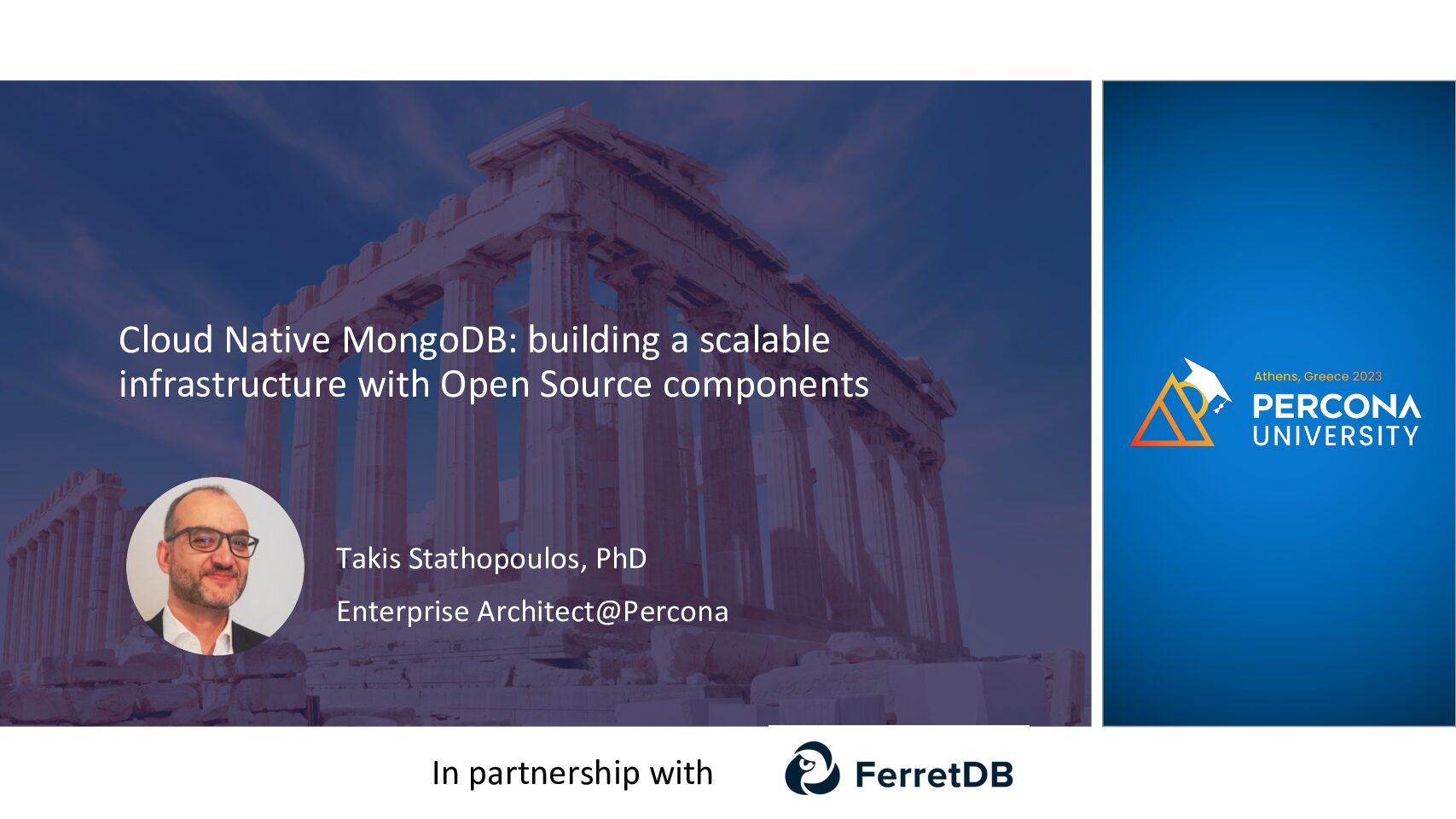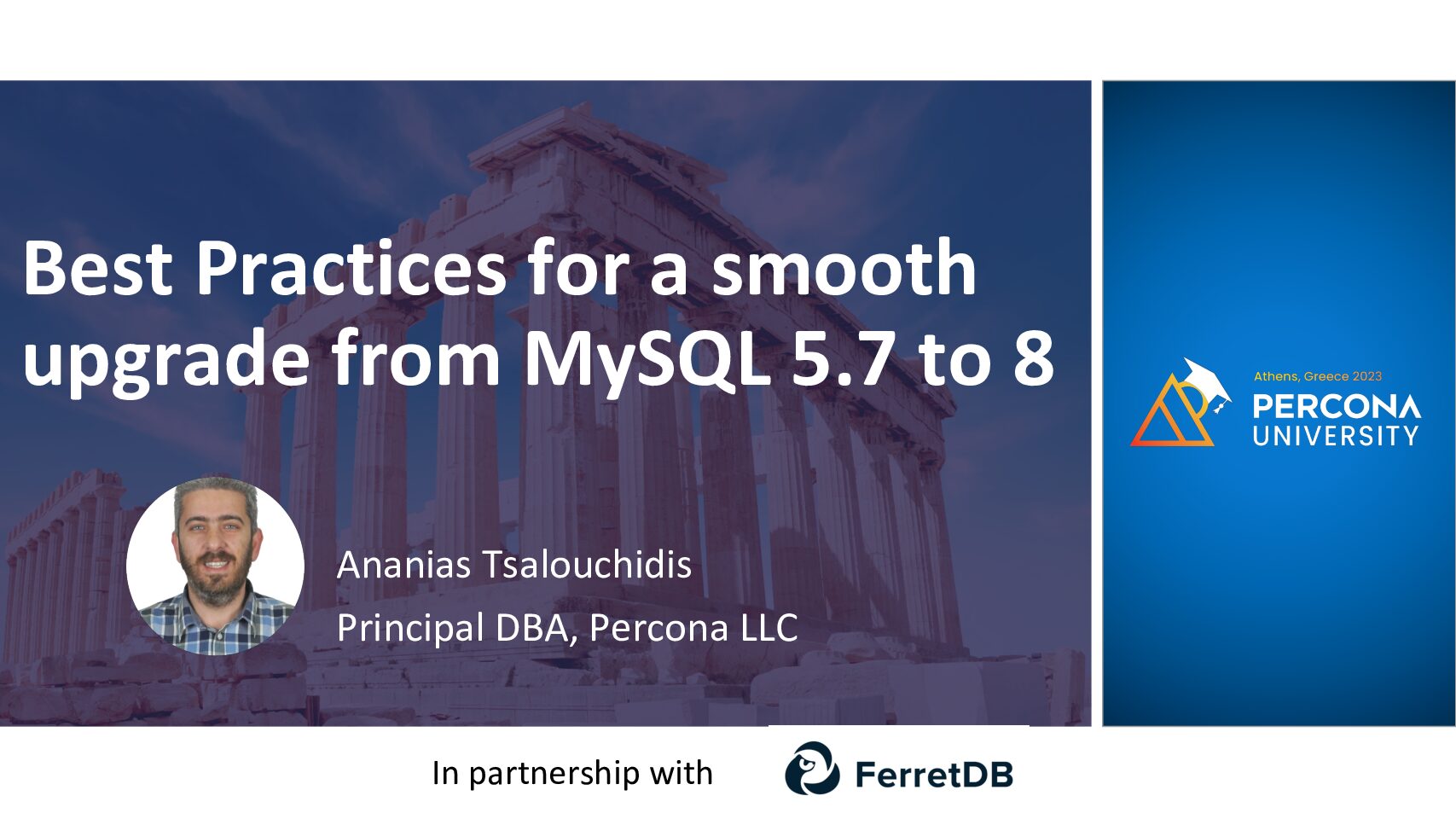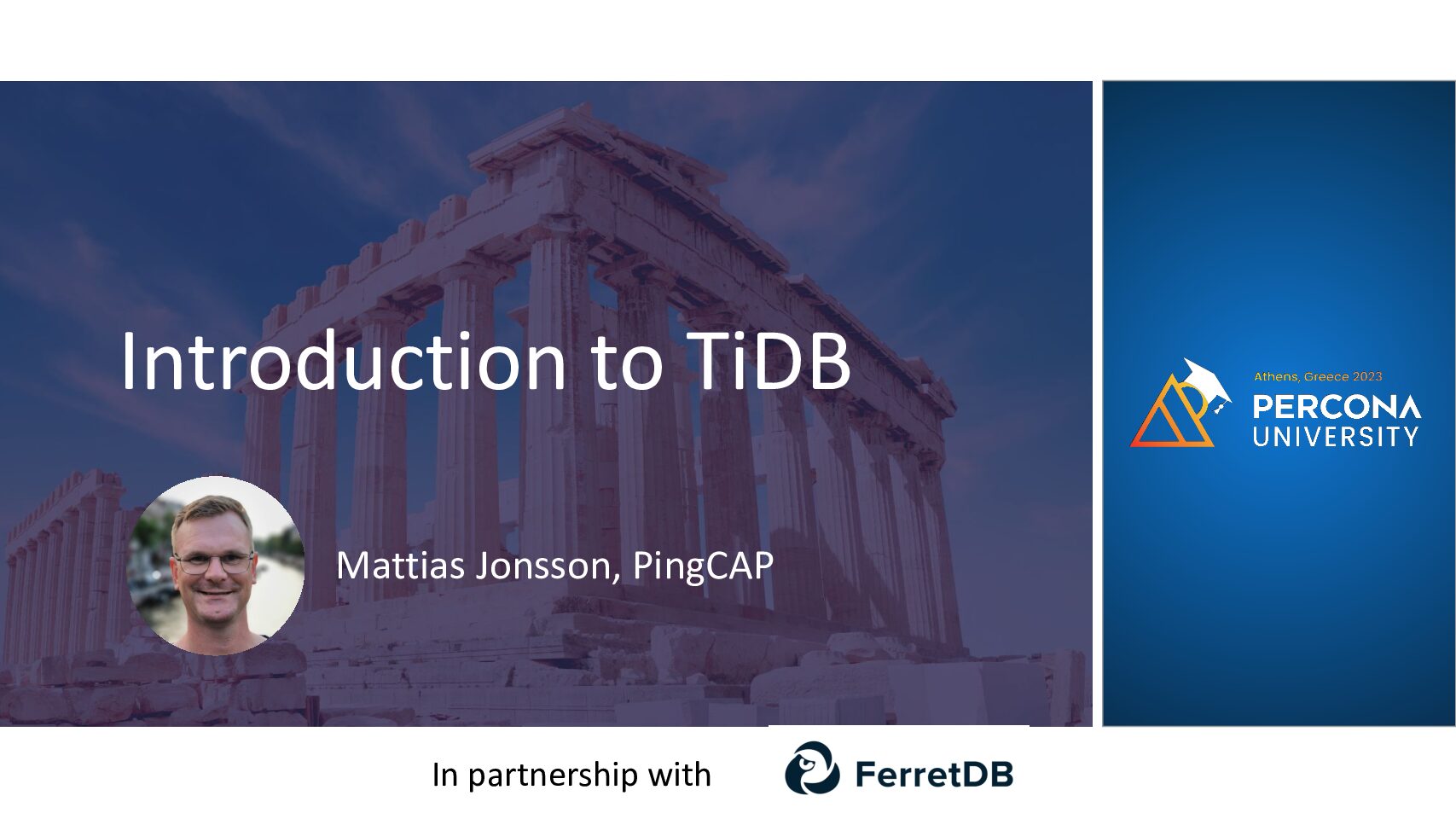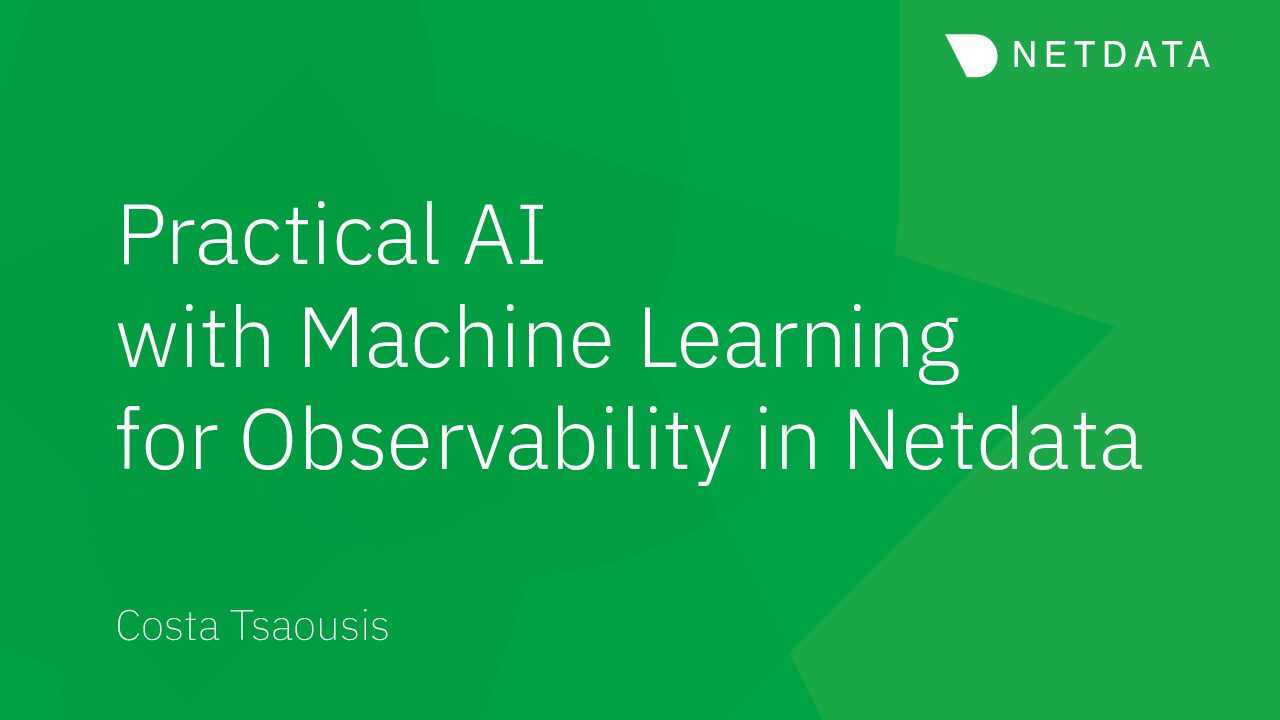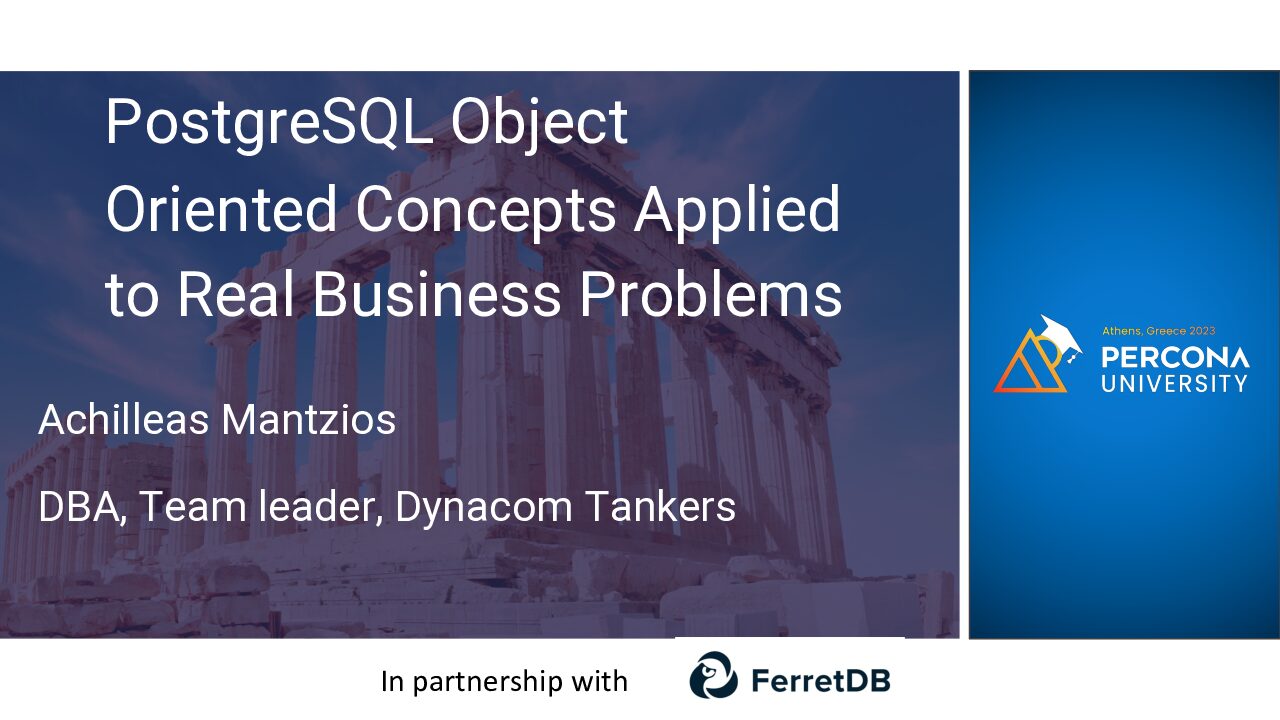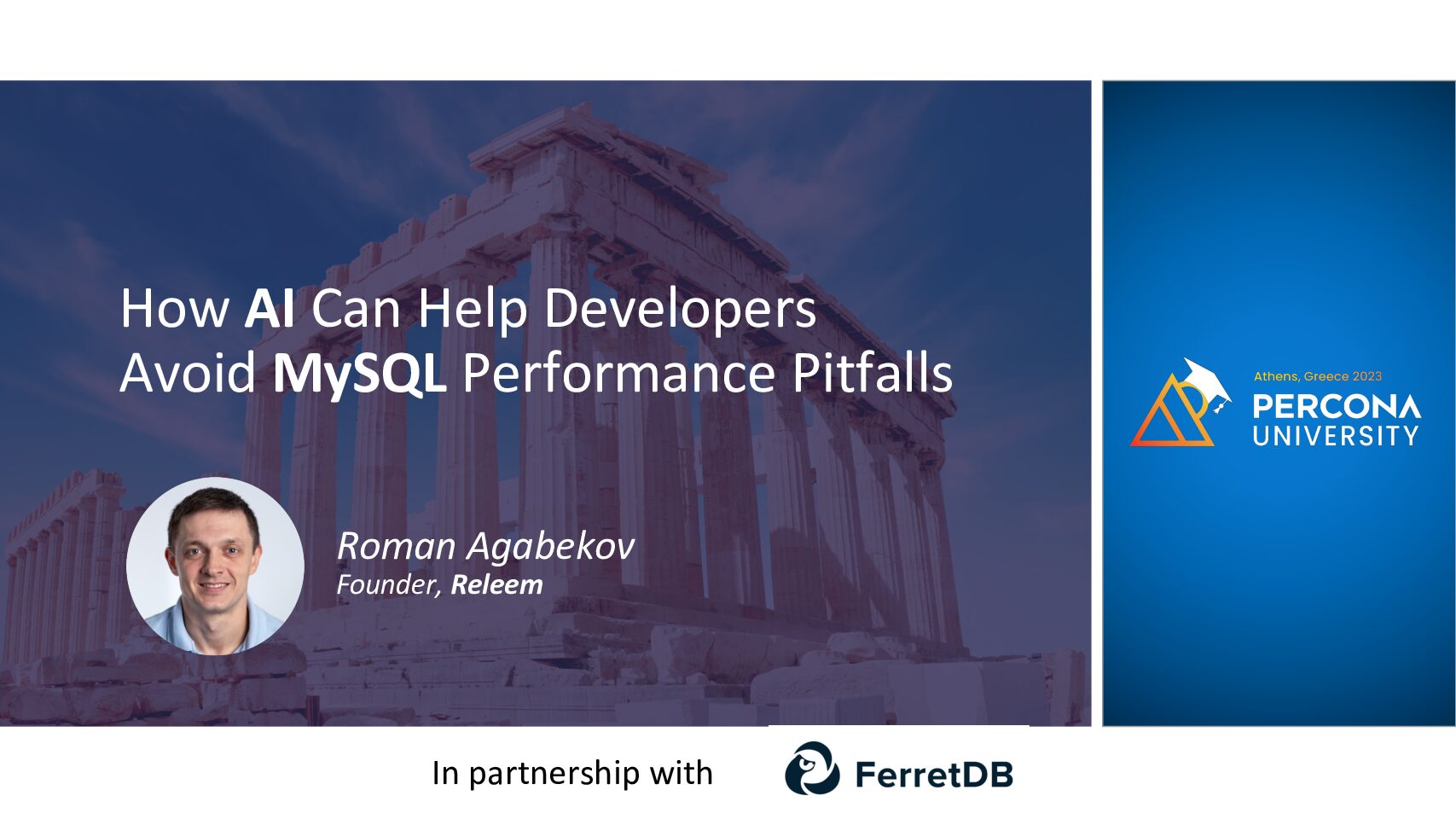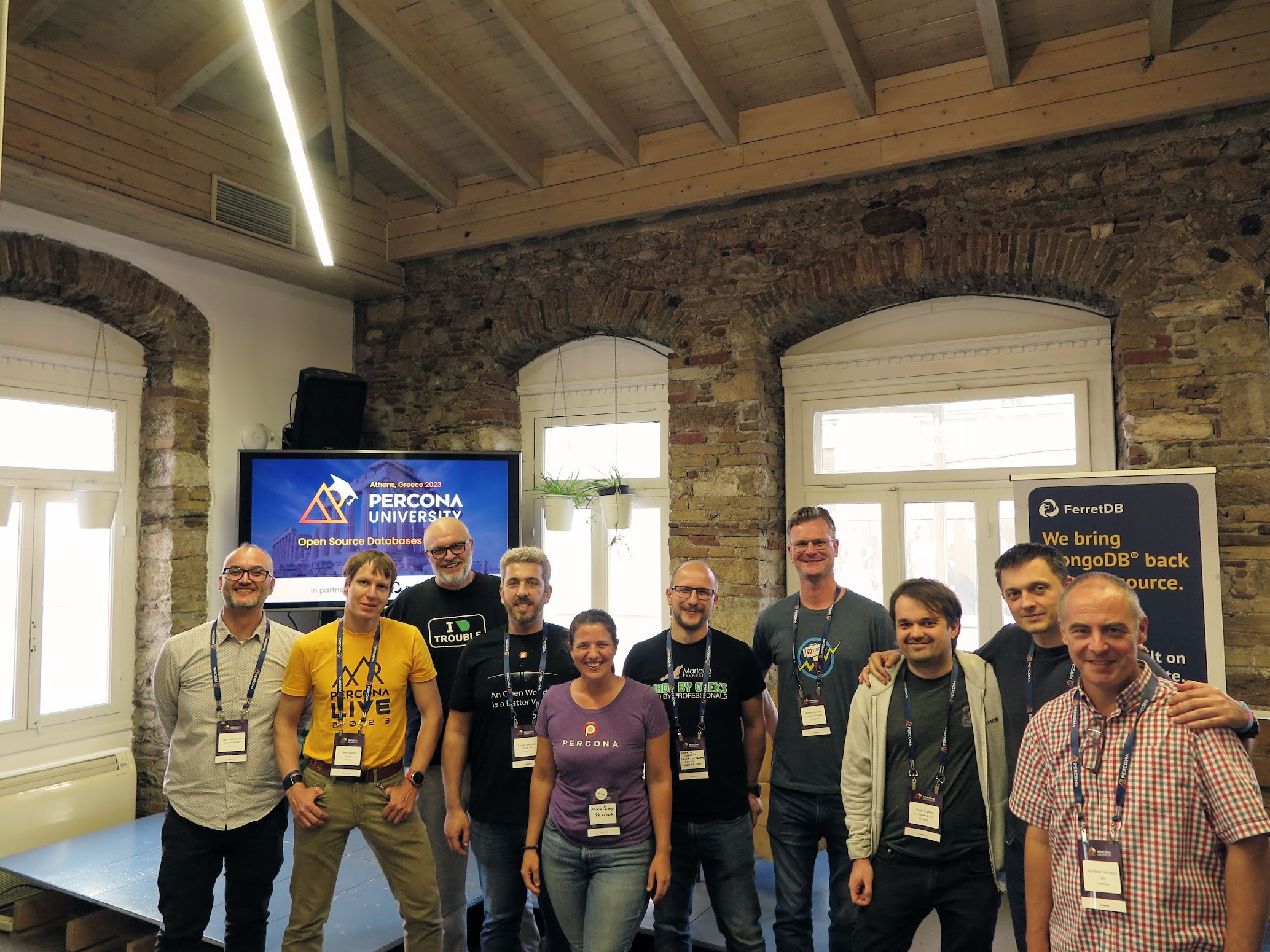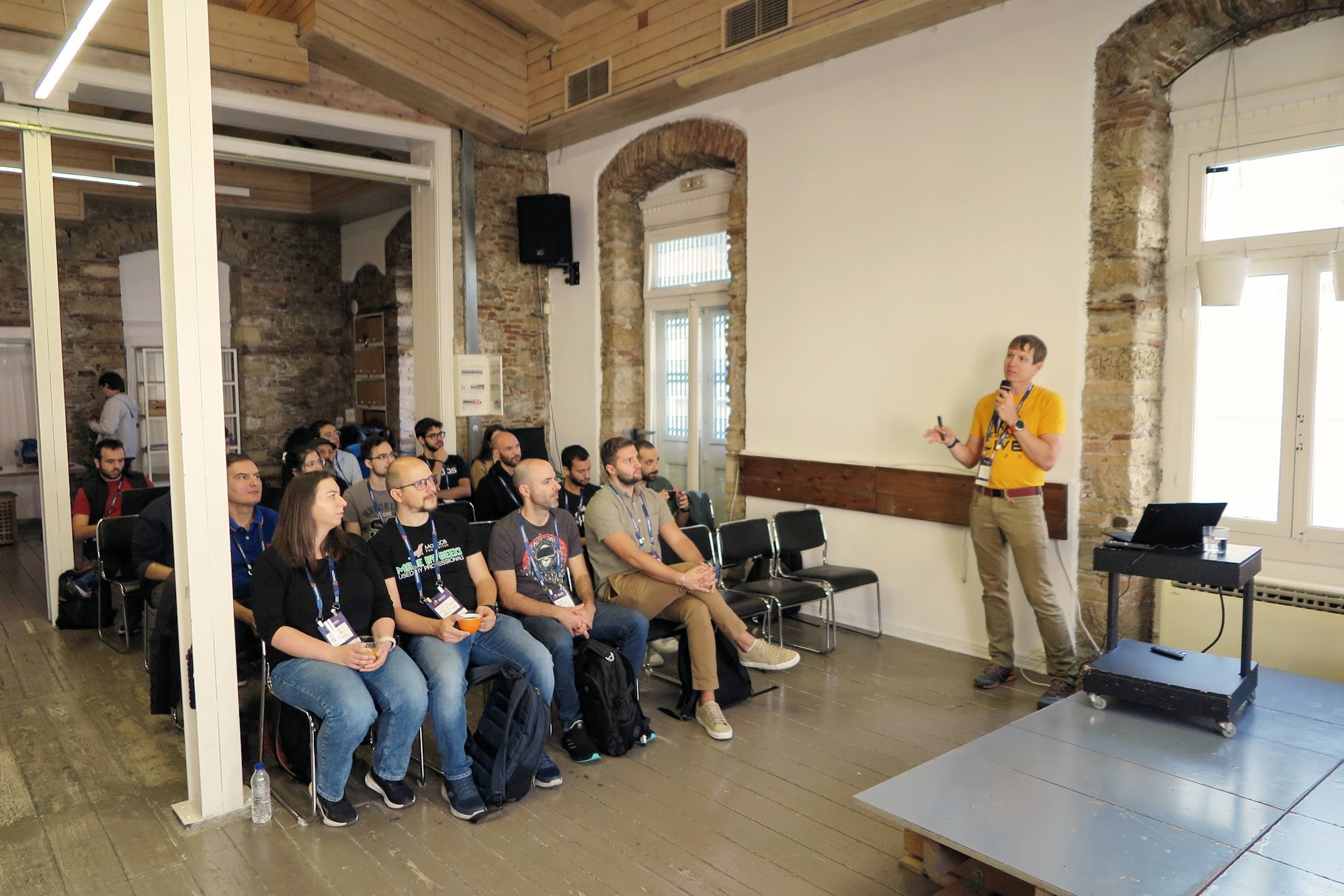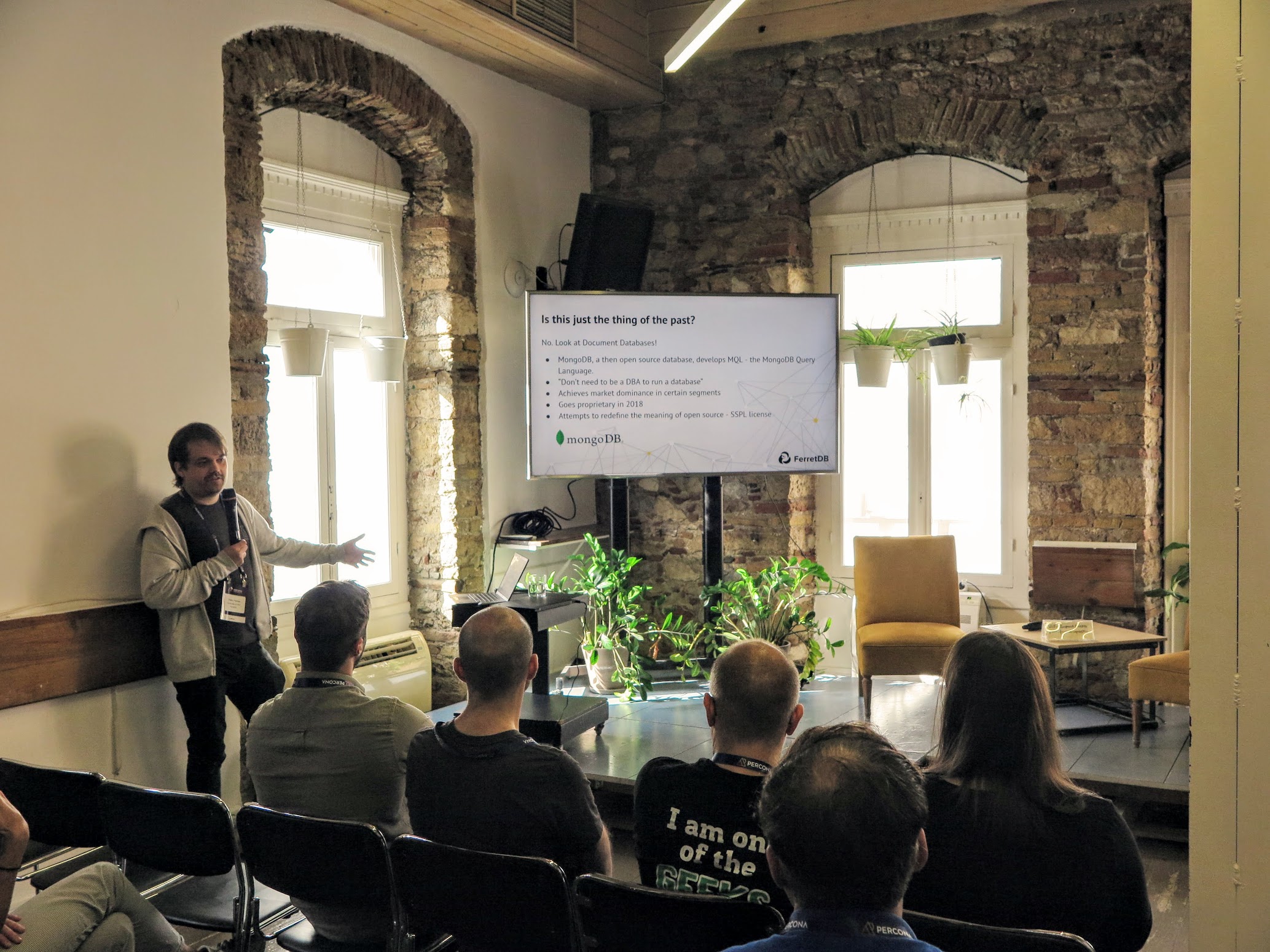
- This event has passed.
Percona University Athens Open Source Databases Meetup 2023
November 7, 2023 @ 9:00 am - 3:00 pm
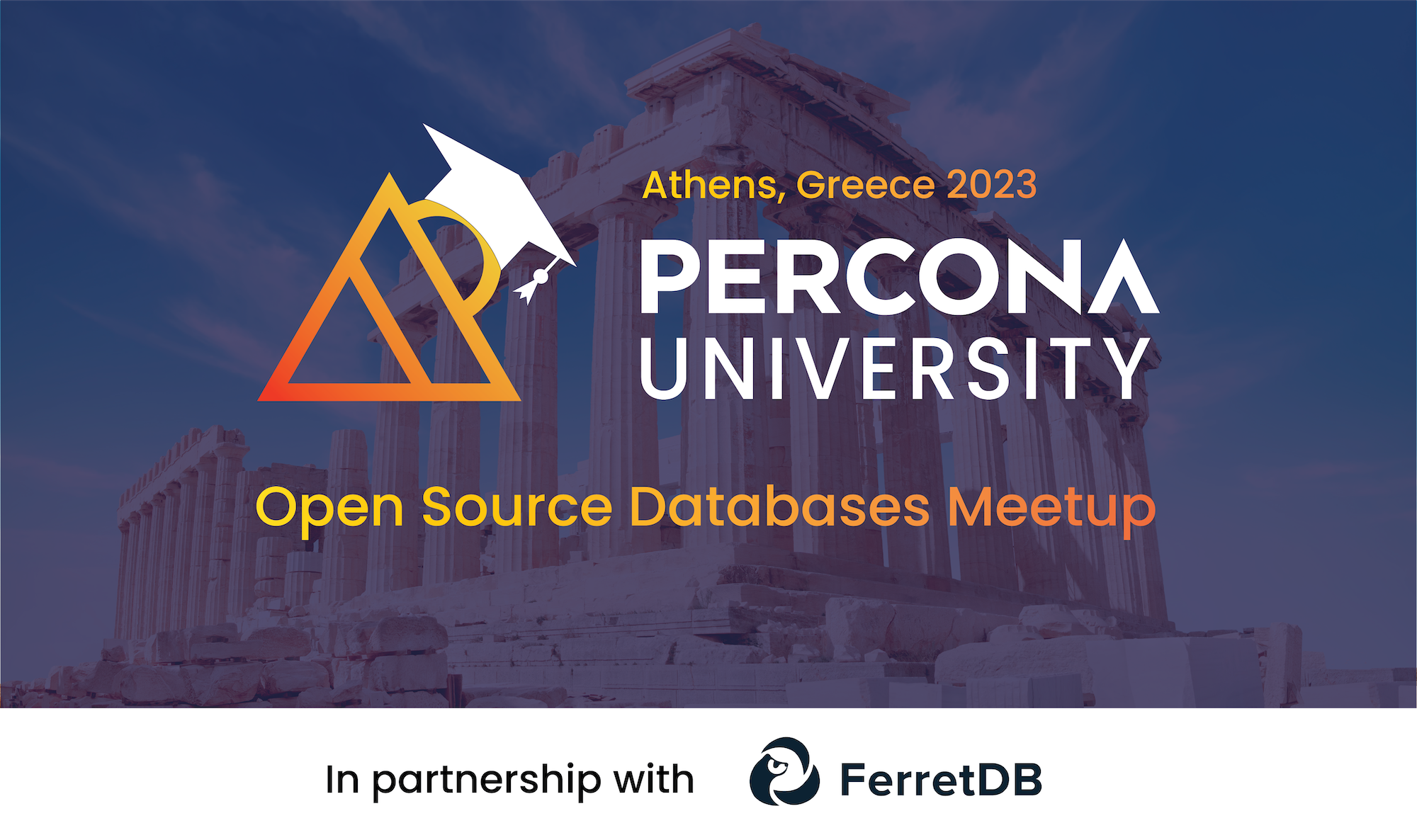
The event has ended
Grab Slides & Video
Cloud of Serfdom vs Cloud of Freedom: Why Open Source Will Win in the Cloud age
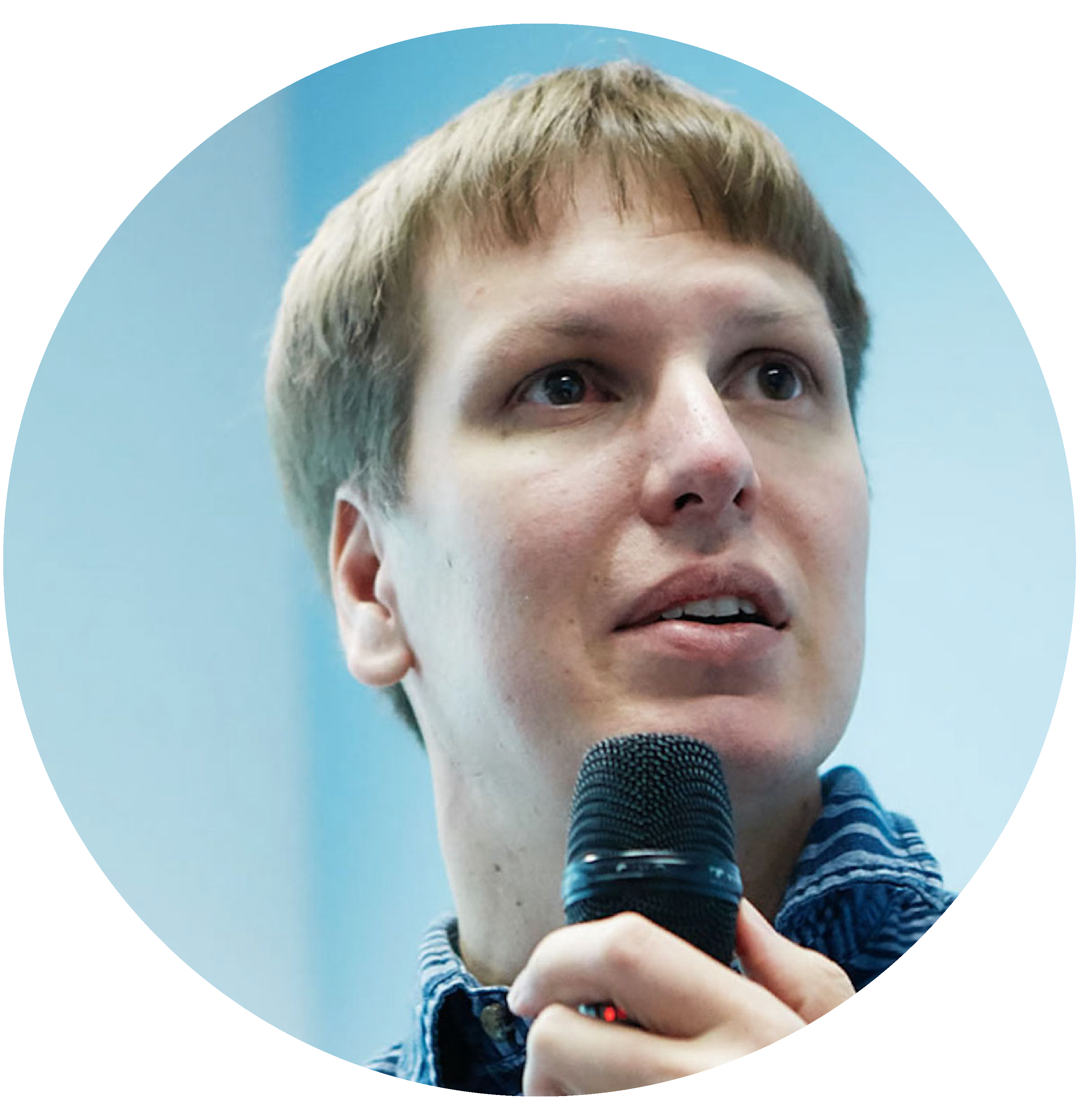
Peter Zaitsev, Founder at Percona
Moving MongoDB Workloads to Postgres with FerretDB

Peter Farkas, Co-founder & CEO at FerretDB
Cloud Native MongoDB: building a scalable infrastructure with Open Source

Takis Stathopoulos, Enterprise Architect, Percona
MySQL 5.7 Goes EOL. How to Upgrade to MySQL 8

Ananias Tsalouchidis, Principal DBA, Percona
Practical AI with Machine Learning for Observability in Netdata

Costa Tsaousis (Founder and CEO at NetData)
PostgreSQL Object Oriented Concepts Applied to Real Business Problems

Achilleas Mantzios, DBA, Team leader, Dynacom Tankers
How AI Can Help Developers Avoid MySQL Performance Pitfalls

Roman Agabekov, Founder, Releem
Talk description
Cloud and Open Source have a very intricate relationship! In this talk we will look at the history of how the impact of Cloud on Open Source changed through the years, examine the current state as well as make a case for a particular way to use Cloud and Open Source Together. If you cherish the values of Open Source – you will do well by using Cloud as Commodity Infrastructure Provider and run Open Source Software on top of it. Consider Kubernetes in particular as your API of choice with its ubiquitous availability among all major public cloud providers and private cloud software vendors. We will show what while this ecosystem may not be as mature as proprietary solution from cloud vendors it is moving rapidly and becoming a great fit for more and more situations.

About the Author
Peter Zaitsev, Founder at Percona, Open
Source Advocate
As one of the foremost experts on Open Source strategy and databases optimization, Peter leveraged both his technical vision and entrepreneurial skills to grow Percona from a two-person shop to one of the most respected open source companies in the business. Now Peter continues as a Board Member & Advisor in a range of open source startups. Peter is a co-author of High Performance MySQL: Optimization, Backups, and Replication, one of the most popular books on MySQL performance.
Talk description
MongoDB, a widely used database, has garnered both love and hate from its users across different industries due to its ease of use. However, it is no longer open source, faces licensing issues, and requires additional resources and knowledge to run. Is there a viable alternative? Can we move existing MongoDB workloads to Postgres without any application-level changes? How can we ensure MongoDB users can continue to use their tools and frameworks? In this talk, we will discuss the current state of document databases and why there is a need for a new open source standard. We propose that Postgres should serve as the database backend for this standard. We will also demonstrate how to equip your Postgres database with FerretDB, enabling it to handle MongoDB workloads. Finally, we will showcase some MongoDB tools that can be used to manage the database just like if it would be MongoDB. This use case connects Postgres with a different community and workloads.
Talk description
The cost of running a growing enterprise-grade MongoDB environment on the Cloud can quickly get out of control. To make things worse, there are multiple traps awaiting. Factors and settings that initially do not seem important, at scale can significantly impact your spending. In this session, we will discuss the open source options available for running MongoDB workloads in a Cloud Native manner, and you will learn how to build a scalable, cost-effective MongoDB deployment leveraging open source components and K8s.
Talk description
ML for observability can be challenging, given the uniqueness of each workload. However, we can leverage ML to detect individual component anomalies, even if they are sometimes noisy/imprecise. At Netdata, we use ML models to analyze the behavior of individual metrics. These models adapt to the specific characteristics of each metric, ensuring anomalies can be detected accurately, even in unique workloads. The power of ML becomes evident when these seemingly noisy anomalies converge across various services, serving as indicators of something exceedingly unusual. ML is an advisor, training numerous independent models for each individually collected metric to achieve anomaly detection based on recent behavior. When multiple independent metrics exhibit anomalies simultaneously, it is usually a signal that something unusual is occurring. This approach to ML can be instrumental in uncovering malicious attacks and predicting combined failures across seemingly unrelated components.
Talk description
PostgreSQL has been providing OO features since the very early versions, thus making it one of the first ORDBMS systems. To understand OO in databases we may think of tables high in a hierarchy as abstract classes/interfaces in java, while tables that are low in the hierarchy can be parallelized with implementation classes with no subclasses. The technology providing OO in PostgreSQL is called : inheritance. Inheritance in PostgreSQL traditionally has had two major uses : a) partitioning, before native declarative partitioning was provided after v10, and b) for object oriented design on the data model. Logical partitioning or its reverse : consolidation is a very real business need, and can be applied to the case of departmentalization of data and multi-tenancy, while still retaining the ability to view the whole organization as a whole. In this talk we will present some scenarios where inheritance can be a very elegant and performant solution for situations like the one described.
Talk description
MySQL is a popular relational database management system that millions of websites and applications use. Its performance is critical to the overall performance of these applications. However, MySQL performance tuning can be a challenging task for developers. This talk will discuss the importance of MySQL performance tuning, approaches to tuning performance, and how AI can help developers simplify this task.
Photos from event
Our Partner
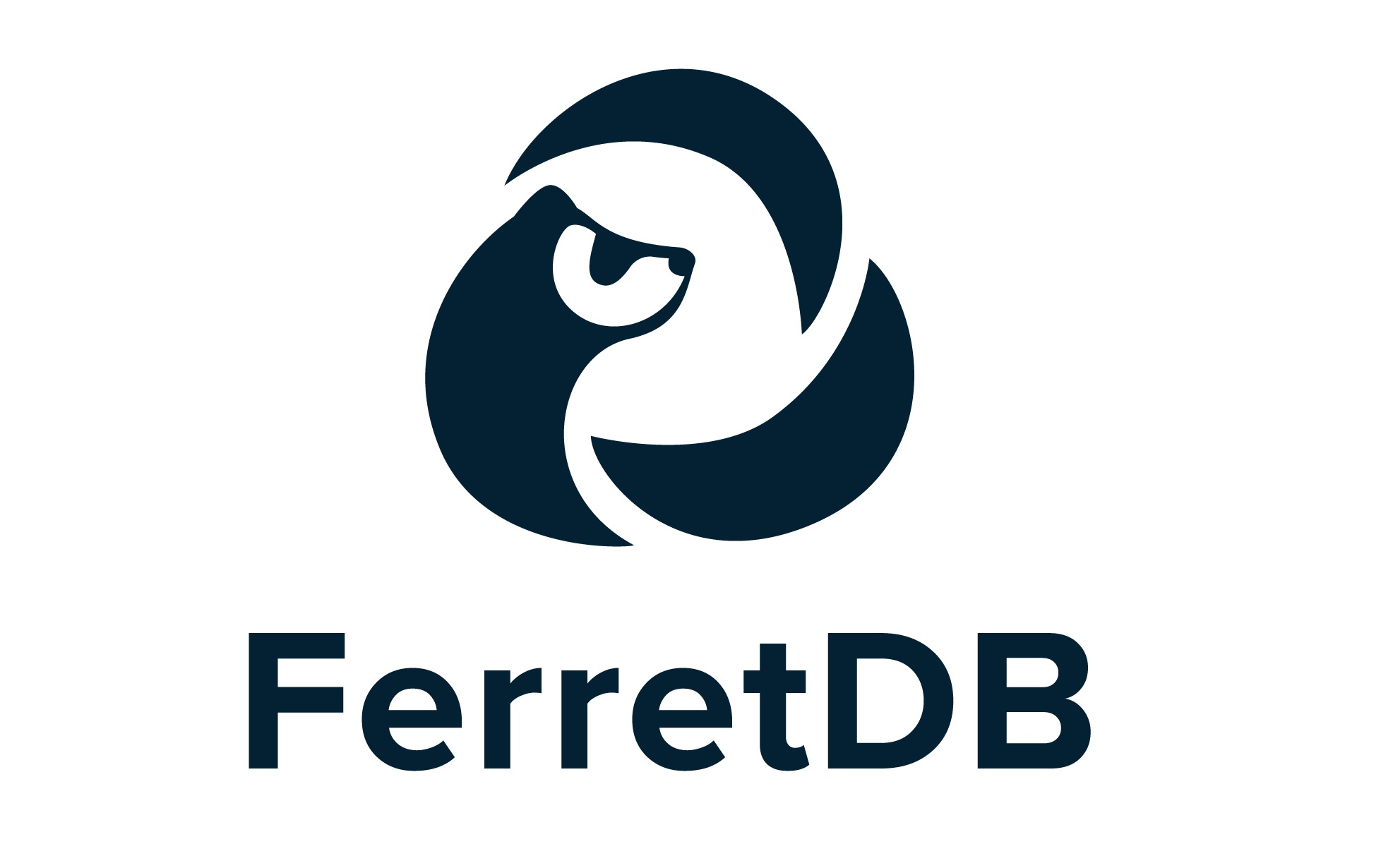
FerretDB is a truly open source alternative to MongoDB, built on Postgres, and released under Apache 2.0. FerretDB turns Postgres into a MongoDB-compatible database. Run MongoDB workloads (JS frameworks, tools, drivers) on Postgres, just like if you would run them on MongoDB. Besides Postgres, FerretDB also supports SQLite as a database backend.

